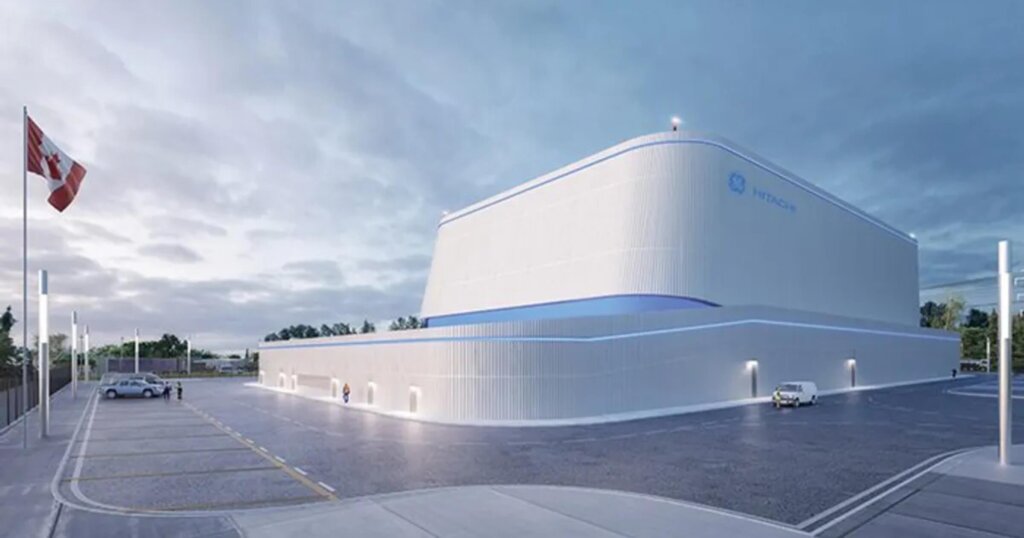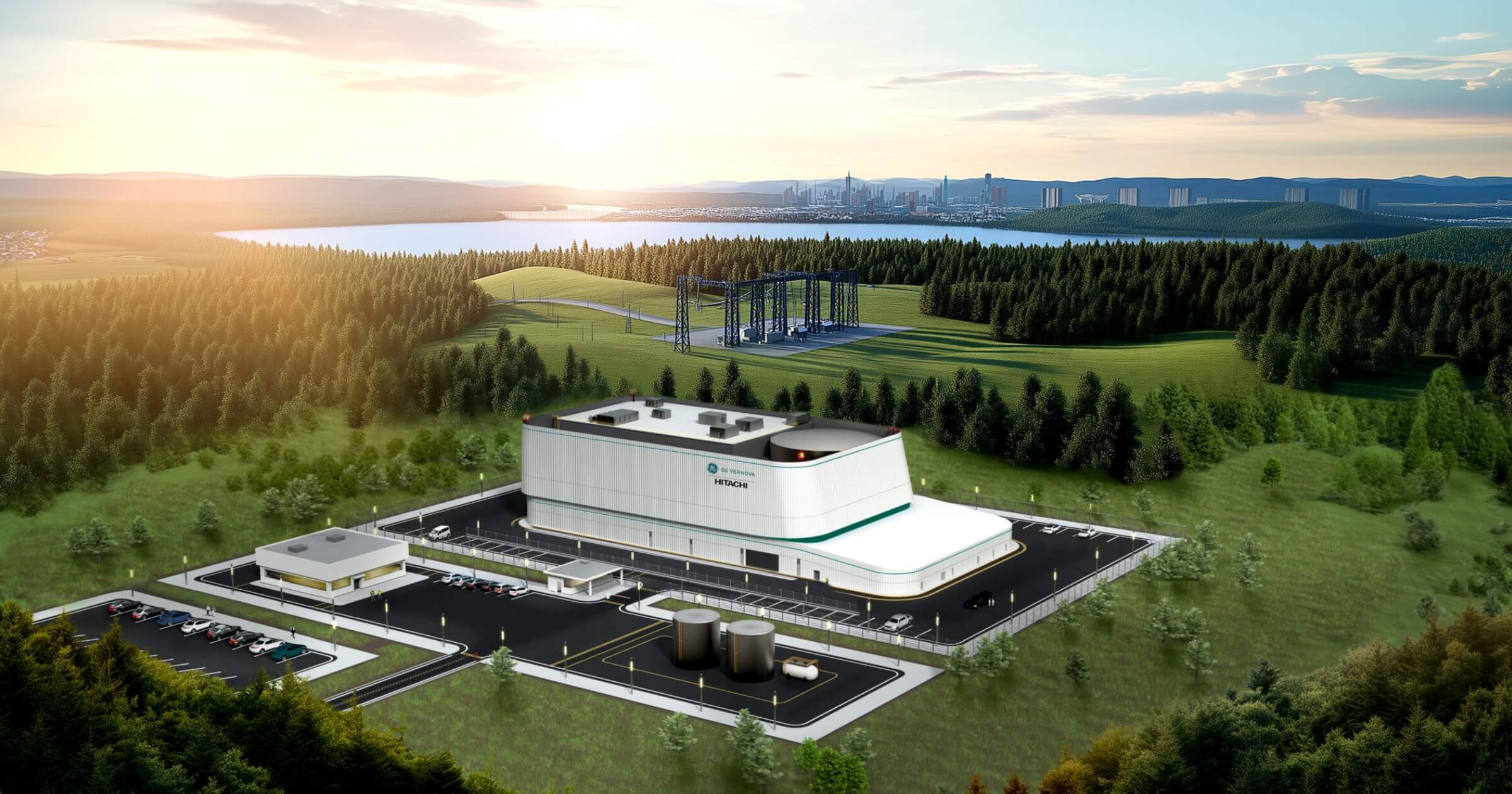There are many reasons the public pushes back on the rampant use of AI, and the energy consumption required to meet demand might be the most common. Data centers quickly consume electricity, with many also relying on fossil fuels, resulting in significant greenhouse gas emissions. In this article, we’ll look at why data center design is being reimagined with renewable integration, such as solar, wind, and Small Modular Reactors (SMRs), and how companies can balance their energy use to meet their future sustainability targets.
Where data center design meets renewable integration
Data center demand continues to grow worldwide. By integrating renewable energy sources into their infrastructure, data centers can operate on clean energy without sacrificing grid stability. Recent innovations include increased rack density, more advanced cooling systems, and the evaluation of modular construction. These design changes reduce construction time while meeting sustainability targets.
Many sustainable designs support backup power that is free of emissions, thereby boosting operational resilience and reducing dependency on non-renewable energy. Renewables, combined with new nuclear energy options, also facilitate smoother and more reliable 24/7 operations.
Core technologies powering renewable-aligned data centers
Solar and wind: fast-to-deploy, clean but intermittent
When companies integrate solar and wind power into data center design, they reduce the reliance on fossil fuels for cooling operations. Wind turbines and solar panels are erected on-site, but many centers opt for Power Purchase Agreements (PPAs) to purchase their renewable solar or wind power off-site through long-term contracts.
The downside to using solar and wind energy is their variable output. Wind and sun aren’t as consistent as burning fossil fuels, so companies exploring this route are urged to have backup energy storage options.
Battery storage and microgrids: managing variability
Battery storage (typically flow batteries or lithium-ion batteries) is used as an energy buffer that stores surplus electricity once generated by wind or solar power. Microgrids are energy systems that operate alongside or independently of the main power grid. They can be used autonomously and are particularly helpful in the event of an energy outage or instability.
Batteries are often discharged during high-cost periods to avoid excess electricity use. This is called peak shaving, which keeps energy use balanced and consistent across various energy storage methods.
Small modular reactors (SMRs): reliable zero-carbon baseload
SMRs are one of the most promising sources of renewable energy for the future of data centers. They deliver consistent power 24/7 and have a smaller land footprint and lower emissions than conventional nuclear plants.
The SMR has a modular design, making it easy to scale these structures near data centers. Their advanced safety features make them lower risk and well-suited to almost any environment. These reactors can also integrate with hybrid microgrids, providing clean, space-efficient, and consistent power to support the growing demand for data centers.

Rendering of a GE-Hitachi BWRX-300 nuclear reactor unit. Image courtesy of GEH.
How to balance renewables and nuclear in hybrid systems
While it is promising, not every data center is ready to flip the switch to renewable energy tomorrow. Data center construction currently strikes a balance between nuclear and hybrid systems by utilizing nuclear energy as a base source of energy that is always on. They then integrate renewables, such as wind and solar, to reduce emission intensity, especially during periods of high-volume generation.
Smart energy balancing also happens when centers use microgrids. The hybrid approach of nuclear base plus renewable supplemental energy creates reliability while also optimizing for sustainability as much as possible. Centers that use this approach also deploy smart controls to anticipate energy demand when new AI products launch, so they can meet the energy needs as they ebb and flow.
Real-world case studies and early adopters
Many companies are already in various stages of integrating renewable energy into their data centers. One notable example is Oracle. They are currently exploring the use of SMRs to power their future centers and are planning the design of a gigawatt-scale center powered by three of them. These plans are currently in the permission and design stage, but they expect the new data center to be operational in the coming years.
Other notable companies integrating renewable energy include Oklo, Microsoft, and smaller utility companies like TVA, Duke Energy, Salt River Project, and Dominion Energy. They are also exploring SMR use and are slated to have their projects underway between 2027 and 2033.
Challenges and design considerations
There are several key challenges and considerations when employing renewable energy in data center design. The most prominent ones include:
- Permitting: For nuclear SMR projects, particularly, permitting is a time-consuming and complex process. There are strict safety and regulatory requirements that must be met.
- High upfront costs: Batteries, solar panels, and wind turbines are effective, but come with a high upfront price tag.
- Grid connection restraints: Issues like transmission limits and utility approval delays can bog down deployment and scalability.
- Land use: Solar and wind farms need significant space to operate effectively, and they may have to compete with other land uses or face issues with local opposition.
While none of these challenges are impossible barriers, they can slow down operations or completely derail projects without the upfront budget.
How to get started with renewable integration
If companies want to explore the use of wind, solar, SMR, and battery storage energy, there are a few steps that can be taken to get started.
- Start with an energy audit: Assess your current energy demands, stability levels, and energy output.
- Explore PPA options: If there are power purchase agreements applicable to your area and demand center needs, they could be worth exploring.
- Assess SMR feasibility: How possible is it to deploy an SMR to your current center or future projects?
- Consider modular builds: Modular construction is gaining popularity in the data center sector.
- Start with a hybrid approach: Balance nuclear energy with a renewable source to keep power output reliable and consistent.
By breaking down renewable integration into steps, companies can better plan their data center construction projects. They can work to make small improvements with clean energy use, or at least flesh out their plans for more sustainable future operations.
Final thoughts
The future of data centers is sustainable, especially as AI energy demand continues to rise. Companies like Oracle, Microsoft, and Oklo are already exploring SMR use with future projects; many companies, from small utility businesses to large tech giants, are following suit.
Companies don’t have to go full-tilt green energy tomorrow; by using a blend of wind, solar, and battery storage with nuclear energy, they can meet energy demands while reducing emissions at the same time. Rollout might be slow, but the control and long-term emissions savings are well worth it.
Want to stay in the loop about AI in AEC? Don’t forget to subscribe to the newsletter and follow Under the Hard Hat on LinkedIn.


